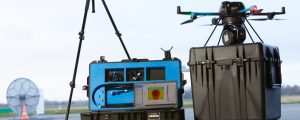Under the agency’s ARTES Core Competitiveness programme, the startup will develop, validate and certify its UAV testing system, to enable accurate satellite antenna testing and calibration.
“ARTES Core Competitiveness programme was established to support the transformation of innovative ideas into new products within satcom enabling the competitiveness of ESA Member States Industry,” said Domenico Mignolo, Head of Ground Segment section of the ESA.
“Our collaboration with QuadSAT has accelerated its research and product development process and enabled it to validate its accuracy and efficiency to pursue business opportunities. We are glad to support QuadSAT in its product development.”
Kiruna Earth Station
Earlier this year, the startup reported successfully completing a measurement campaign of large antennas – measuring up to 15m – at the Kiruna Earth Station in Sweden.
Specifically, the campaign saw QuadSAT testing KIR-1 (a 15m antenna) and KIR-2 (a 13m antenna) at the earth station on behalf of ESA’s ESOC centre.
The drone-based system – which involves a customised payload mounted onto a professional-grade UAS (unmanned aircraft system) – is designed to avoid having to use either satellite tracking, which requires a free satellite segment and coordination with the satellite operator, or fixed RF beacons, involving the construction of a large testing structure.

